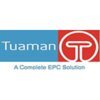QA/QC Civil Engineer
40+ QA/QC Civil Engineer Interview Questions and Answers

Asked in Tata Projects

Q. What steps do you take when building materials arrive on-site, including testing procedures?
Upon arrival of building materials at site, testing should be conducted to ensure quality and compliance with standards.
Inspect the materials for any visible defects or damages
Conduct necessary tests such as compressive strength test for concrete, moisture content test for wood, etc.
Ensure that the materials meet the required standards and specifications
Document the test results and keep records for future reference
Reject any materials that do not meet the standards or show s...read more

Asked in Larsen & Toubro Limited

Q. How much cement content in your mix design and types of concretes ur using in present site
I am using a mix design with X amount of cement content and various types of concrete on site.
The mix design includes X amount of cement content.
We are using different types of concrete on site such as reinforced, precast, and prestressed concrete.
The type of concrete used depends on the specific project requirements and design.
We ensure that the concrete mix meets the required strength and durability standards.
Regular testing and quality control measures are implemented to e...read more

Asked in Bansal Infratech Synergies

Q. How to prepare method statments and how flexible are you in working?
Method statements are prepared by analyzing the project requirements and identifying the necessary steps. I am very flexible in working.
Analyze project requirements
Identify necessary steps
Include safety measures
Ensure compliance with regulations
Be open to suggestions and changes
Collaborate with team members
Prioritize tasks based on urgency
Maintain clear communication with stakeholders

Asked in Adani Group

Q. What is the IS code for RMC plant calibration?
IS 4926 is the code for RMC plant calibration
IS 4926 is the Indian Standard code for Ready Mixed Concrete (RMC) plant calibration
The code specifies the procedure for calibration of RMC plants to ensure quality and consistency in concrete production
Calibration involves checking and adjusting the equipment used in the RMC plant to meet the specified requirements
Regular calibration helps in maintaining the accuracy of the plant and ensures the quality of the concrete produced

Asked in Anoc

Q. How do you perform work effectively under pressure from upper management?
To perform work perfectly under pressure, I prioritize tasks, communicate effectively, and remain calm.
Prioritize tasks based on urgency and importance
Communicate effectively with upper management to understand their expectations and provide updates on progress
Remain calm and focused, taking breaks as needed to avoid burnout
Use problem-solving skills to find solutions to challenges that arise
Stay organized and maintain attention to detail to ensure quality work
Seek feedback a...read more


Q. Tell me about the sand replacement test for soil.
Replacement test of soil is conducted when the initial test results are not satisfactory.
Replacement test is conducted to ensure the accuracy of the initial test results.
The soil sample is collected again and tested using the same procedure as the initial test.
If the replacement test results are satisfactory, they are considered as the final results.
If the replacement test results are still not satisfactory, further investigation is required.
QA/QC Civil Engineer Jobs




Asked in Bansal Infratech Synergies

Q. How do you handle 15 jobs or inspections simultaneously?
Prioritize tasks based on urgency and importance, delegate responsibilities, and use time management techniques.
Create a to-do list and prioritize tasks based on urgency and importance
Delegate responsibilities to team members or colleagues
Use time management techniques such as the Pomodoro technique or time blocking
Ensure clear communication with all stakeholders
Regularly review progress and adjust priorities as needed

Asked in Adani Group

Q. Describe the fineness modulus of fine and coarse aggregate.
Fineness modulus is a measure to determine the average particle size of aggregate. It is calculated by summing up the cumulative percentages of aggregate retained on each of a specified series of sieves and dividing the sum by 100.
Fineness modulus of fine aggregate typically ranges from 2.2 to 2.8.
Fineness modulus of coarse aggregate typically ranges from 6.5 to 8.0.
Higher fineness modulus indicates finer particles and lower fineness modulus indicates coarser particles.
It hel...read more
Share interview questions and help millions of jobseekers 🌟

Asked in BCD Bangalore

Q. What is your awareness of Indian standards and Quality Management Systems (QMS)?
I am well-versed in Indian standards and QMS, ensuring compliance and quality in civil engineering projects.
Familiar with IS codes like IS 456 for plain and reinforced concrete design.
Knowledge of ISO 9001:2015 for Quality Management Systems in construction.
Experience in implementing quality control measures during construction phases.
Understanding of NDT methods as per IS standards for material testing.
Awareness of environmental standards like ISO 14001 for sustainable pract...read more
Asked in BCD Bangalore

Q. What methods do you use to collaborate with clients and ensure the implementation of quality work?
I prioritize clear communication, regular updates, and collaborative tools to ensure quality work with clients.
Establish regular communication channels, such as weekly meetings, to discuss project progress and address concerns.
Utilize project management software (e.g., Trello, Asana) to share timelines, tasks, and updates with clients.
Conduct site visits with clients to review work quality and gather feedback on ongoing projects.
Implement a quality assurance checklist that cl...read more

Asked in CQRA

Q. What is the water-cement ratio for M30 grade concrete?
The water-cement ratio for M30 grade concrete is typically around 0.45.
The water-cement ratio for M30 grade concrete is usually in the range of 0.45 to 0.50.
Maintaining the correct water-cement ratio is crucial for the strength and durability of the concrete.
Excess water can lead to lower strength and durability, while too little water can make the concrete unworkable.
For example, for M30 grade concrete, a water-cement ratio of 0.45 means 0.45 parts of water for every 1 part ...read more

Asked in Bansal Infratech Synergies

Q. What is the difference between QA and QC functions?
QA focuses on preventing defects while QC focuses on identifying and correcting defects.
QA is a proactive process that involves planning, designing, and implementing quality systems to prevent defects from occurring.
QC is a reactive process that involves testing and inspecting products or services to identify and correct defects.
QA is focused on the entire process of product development, while QC is focused on the final product.
Examples of QA activities include developing qua...read more


Q. Do you have a police verification certificate?
I currently do not possess a police verification certificate, but I understand its importance for background checks.
Police verification certificates are often required for roles involving safety and security.
They help ensure that candidates have a clean legal record.
In my previous roles, I have undergone background checks that included police verification.
I am willing to obtain a police verification certificate if required for this position.

Asked in Consulting Engineers Group

Q. What is the difference between shotcrete and concrete?
Shotcrete is a type of concrete that is sprayed onto surfaces at high velocity, while concrete is a mixture of cement, water, and aggregates that is poured into molds.
Shotcrete is applied using a high-pressure hose, while concrete is typically poured into molds.
Shotcrete is often used for repairing or reinforcing structures, while concrete is used for building foundations, walls, and floors.
Shotcrete can be dry-mix or wet-mix, while concrete is typically mixed on-site before ...read more

Asked in Tuaman Engineering

Q. What are the key elements of a quality control plan?
A quality control plan outlines procedures to ensure project standards and specifications are met throughout construction.
Objectives: Define clear quality objectives, such as reducing defects by 20%.
Standards: Specify relevant standards (e.g., ASTM, AASHTO) for materials and workmanship.
Inspection Procedures: Outline methods for inspecting materials and work (e.g., visual inspections, testing).
Documentation: Maintain records of inspections, tests, and non-conformance reports....read more

Asked in Tuaman Engineering

Q. What is the procedure for handling a non-conformance report?
A non-conformance report (NCR) outlines deviations from project specifications and the corrective actions taken.
Identify the non-conformance: Document the specific issue, e.g., a material not meeting strength requirements.
Notify relevant stakeholders: Inform project managers, engineers, and quality control teams about the NCR.
Investigate the cause: Conduct a root cause analysis to determine why the non-conformance occurred, such as poor workmanship.
Develop corrective actions:...read more

Asked in CQRA

Q. What is the code for mix design?
The code for mix design is typically specified by the relevant standards such as ASTM or ACI.
The code for mix design can vary depending on the country and project specifications.
Common codes for mix design include ASTM C192, ASTM C94, and ACI 211.1.
The mix design code provides guidelines for selecting proportions of materials to achieve desired concrete properties.

Asked in Larsen & Toubro Limited

Q. How many cubes do you cast per 1 m³?
The number of cubes cast per 1 m³ depends on the size of the cube.
The size of the cube can vary from 50mm to 150mm.
For example, if the cube size is 100mm, then 1000 cubes will be cast per 1 m³.
The number of cubes cast per 1 m³ is important for determining the compressive strength of concrete.
Asked in Dynacon Projects

Q. What are Is codes and many more .
IS codes are Indian standards that provide guidelines and specifications for various engineering practices.
IS codes are published by the Bureau of Indian Standards (BIS) to ensure quality and safety in engineering projects.
They cover a wide range of topics including construction materials, structural design, and quality control.
For example, IS 456:2000 specifies the code of practice for plain and reinforced concrete.
Engineers and construction professionals refer to IS codes t...read more

Asked in Adani Group

Q. What is CTM calibration?
CTM calibration stands for Compressive Testing Machine calibration, which is the process of ensuring the accuracy and reliability of a CTM used for testing the compressive strength of concrete samples.
CTM calibration involves verifying the accuracy of the load cell and displacement transducer used in the machine.
Calibration is typically done using known weights and displacement measurements to ensure the machine is providing accurate results.
Regular calibration is important t...read more

Asked in Larsen & Toubro Limited

Q. What do you know about ISO?
ISO is an international organization that develops and publishes standards for various industries.
ISO stands for International Organization for Standardization
ISO develops and publishes standards for various industries such as quality management, environmental management, and information security management
ISO 9001 is a quality management standard that outlines requirements for a quality management system
ISO 14001 is an environmental management standard that outlines requirem...read more

Asked in Feedback Infrastructure Services

Q. What is a QAP? What is the procedure for creating one?
QAP stands for Quality Assurance Plan. It is a document that outlines the procedures and processes to ensure quality in a project.
Identify project requirements and quality standards
Define roles and responsibilities for quality control
Establish inspection and testing procedures
Document non-conformance and corrective actions
Review and update the QAP regularly
Asked in Dynacon Projects

Q. Exposure conditions for various structural members
Exposure conditions for structural members vary based on location, material, and environmental factors.
Exposure conditions include weather, temperature, humidity, and corrosive elements.
Concrete structures may be exposed to freeze-thaw cycles, saltwater, or chemicals.
Steel structures may be exposed to moisture, salt spray, or industrial pollutants.
Wood structures may be exposed to rain, sunlight, insects, and fungi.
Proper design and materials selection are crucial to ensure d...read more
Asked in Dynacon Projects

Q. Soil engineering and their relevant tests.
Soil engineering involves testing and analyzing soil properties to determine its suitability for construction projects.
Soil testing helps determine soil composition, strength, density, and permeability.
Common soil tests include sieve analysis, moisture content, compaction tests, and California Bearing Ratio (CBR) tests.
Soil engineering also involves assessing soil stability, settlement potential, and potential for erosion.
Soil tests help engineers make informed decisions abou...read more

Asked in Alcove Realty

Q. Different Anchorage length and development length
Anchorage length is the length of the embedded portion of a reinforcement bar, while development length is the length required for full bond strength.
Anchorage length is determined by the type of structure and the forces it will experience.
Development length is calculated based on the diameter of the reinforcement bar and the strength of the concrete.
Anchorage length is typically longer than development length to ensure proper bond strength.
Examples: In a beam-column joint, t...read more

Asked in Alcove Realty

Q. What are the maximum and minimum reinforcement requirements for a column?
Maximum and minimum reinforcement of column
The maximum reinforcement in a column is typically limited to 4% of the cross-sectional area of the column
The minimum reinforcement in a column is usually around 0.8% to 1.0% of the cross-sectional area
Reinforcement in columns is provided to resist bending and shear forces

Asked in Alcove Realty

Q. What is the formula for Ld?
Ld is the formula for calculating the development length of reinforcement bars in concrete structures.
Ld = 1.3 * φ * db * fy / σs
Ld = development length
φ = reduction factor for tension bars
db = diameter of the bar
fy = yield strength of the bar
σs = permissible stress in the steel

Asked in Bridgeindia

Q. What is the full form of PQC?
PQC stands for Pavement Quality Concrete.
PQC stands for Pavement Quality Concrete.
It is a type of concrete used for road construction.
PQC is designed to have high durability and strength to withstand heavy traffic loads.
Examples of PQC include rigid pavements used in highways and airports.
Asked in Renuka

Q. What is the difference between WMM and GSB?
WMM stands for Wet Mix Macadam and GSB stands for Granular Sub Base. WMM is a base layer made of aggregates and water while GSB is a layer made of compacted granular material.
WMM is a base layer in road construction made of aggregates and water.
GSB is a layer in road construction made of compacted granular material.
WMM provides a stable base for the road surface while GSB provides a strong foundation for the road.
WMM is more expensive than GSB due to the use of water and high...read more

Asked in Consulting Engineers Group

Q. How many types of rock bolts are there?
There are mainly three types of rock bolts: mechanical, grouted, and frictional.
Mechanical rock bolts are installed by drilling a hole into the rock and then inserting a steel bolt with a plate at one end.
Grouted rock bolts involve injecting grout into the hole before inserting the bolt to provide additional support.
Frictional rock bolts rely on the friction between the bolt and the rock to provide support.
Interview Experiences of Popular Companies








Reviews
Interviews
Salaries
Users

















